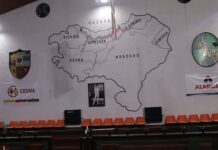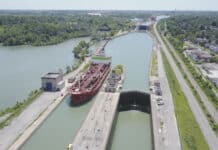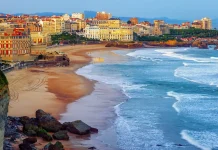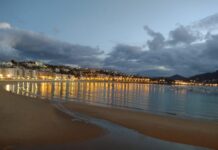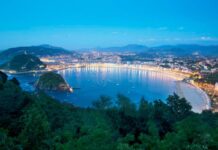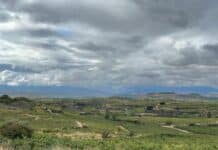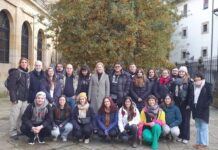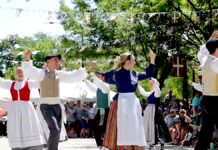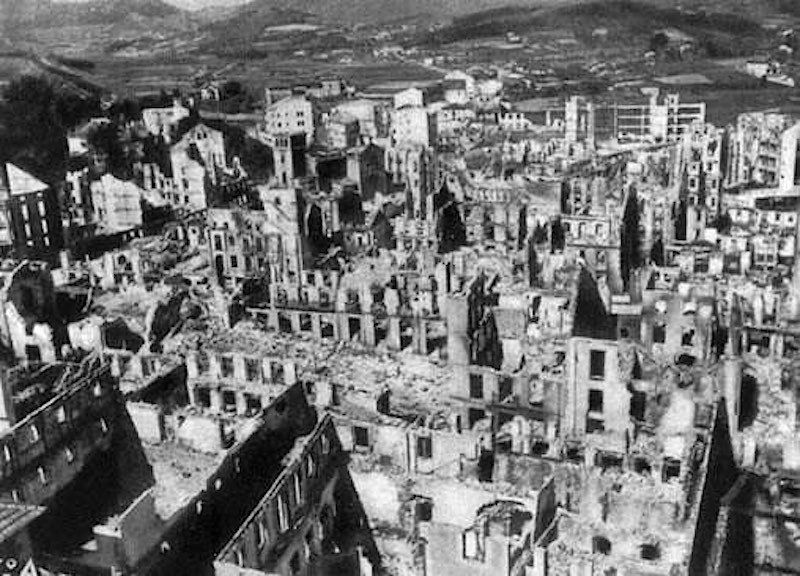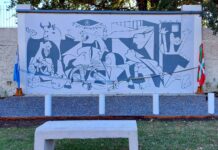Second entry on the Bombing of Guernica written in commemoration of this event held in 2015.
Truth and lies about the bombing of Guernica in 1937
——————————
This Sunday, April 26, 2015, many will be commemorating, yet another year, still with hearts torn by the tragedy despite all the time that’s passed, the crime that was the Bombing of Guernica. We have referred to this historic event many times. On this anniversary, we’d like to share something different with our readers, something which unites the three elements of that historical moment that has always been especially important to us
The bombing of Guernica and the web of lies about the guilty parties and their “friends”
On many occasions, we’ve spoken about this war crime, and we’ve denounced the crude and miserable (sic) attempts to try to minimize that tragedy. Sometimes, we have done so outraged, and we’ve had to hold ourselves back so as to not cross any lines and maintain our respect for our readers.
If we had to choose four articles that reflect the tragedy of Guernica, and the tragedy of the lies about Guernica, we’d pick these:
- The exaggeration about the bombing of Guernica, or, Basques will complain about anything
- The bombing of Guernica: against the lies, more truth
- En el 75 aniversario del Bombardeo de Gernika: Memoria, Verdad y Reconocimiento
- Verdades sobre el Bombardeo de Gernika. Por Xabier de Irujo, profesor del Centro de Estudios Vascos de Reno
We can say that in these four articles we’ve summed up what we consider to be the most important ones in our “discussion” about the destruction of the Basques’ Sacred City. In addition to first-hand descriptions from international journalists, there are also well-documented studies from real historians
The extraordinary history and work of George L. Steer
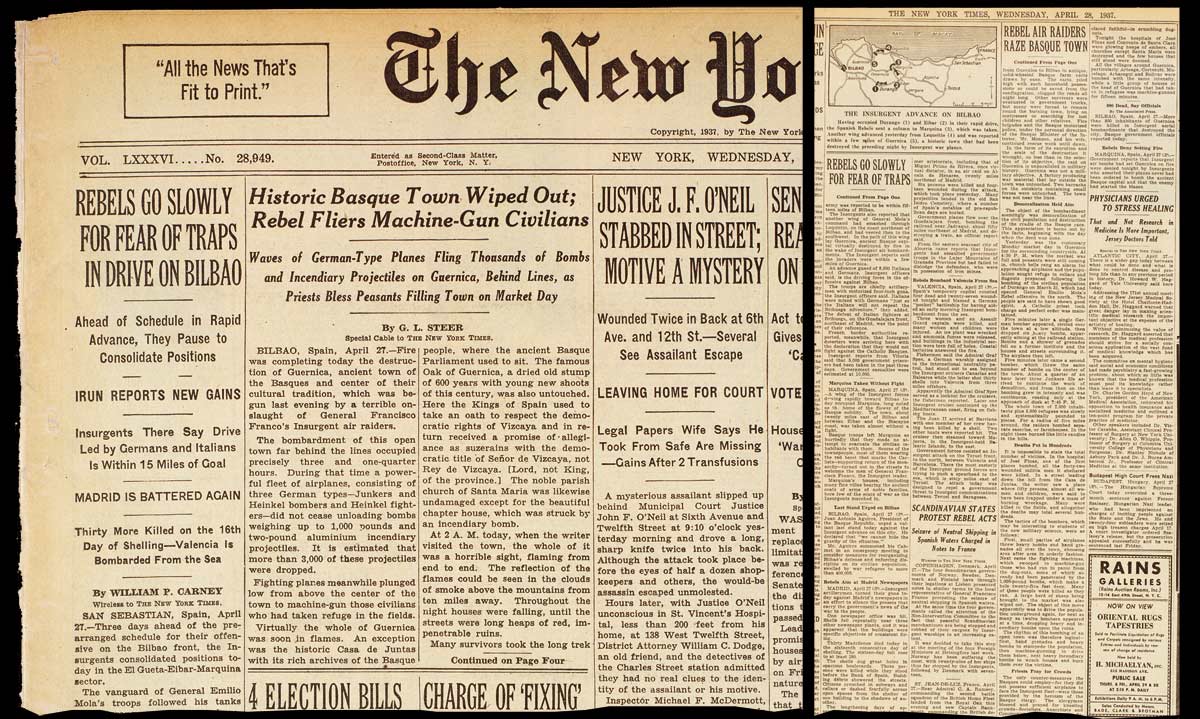
Within that wide range of articles, there is a protagonist with a name, and story, about which we’ve written quite a bit: George L. Steer. This journalist told the widest possible audience about the butchering that the troops defending fascist totalitarianism caused to this Basque town. His description of the bombing became a reference in journalism, and his book, The Tree of Guernica, recounts his experiences during his stay in the Basque Country during the fight, and is a must-read for those who want to know what happened then.
The Basque War Children
One of the consequences of that bombing was the Basque Government’s decision to send thousands of Basque children abroad. The complete destruction of a town like Guernica showed that fascism’s threats were not in vain, and that their claim that they would wipe the entire Basque country under the boot of totalitarianism was not a boast.

We have also dedicated several articles to those children who had to leave behind their families and their homes without knowing what was waiting for them or when they could return. Or what’s worse, what they’d find when they came back.
Most of our references focus on those who took refuge in Great Britain. We’ve found several articles on them thanks in large part to the extraordinary work of the Basque Childrens of ’37 Association of UK (BC37AUK). They are the true heirs and guardians of good of British civil society that, against the will of their government (which was very close to the Spanish fascists), decided to take the initiative and take in 4,000 of those children that ran from a very like death, murdered in a massive bombardment like that of the Siege of Bilbao.
Telling of the Bombing of Guernica – Steer – Basque War Children – British Civilian Society
Nicholas Rankin is the author of Telegram from Guernica: The Extraordinary Life of George Steer, War Correspondent (another must-read). Rankin gave a brilliant conference in 2011 in the annual BC37AUK meeting.
In this text, Rankin brilliantly and easily draws the lines that connect the bombing, Steer, and the arrival of the children to Great Britain, and gives a detailed description of the debate between the majority of civili society and a government that clearly sympathized with the Francoist cause (order and anti-communism). The civilians won out and managed to get 4,000 Basque children refuge on the other side of the Bay of Biscay.
This PDF document is worth reading. Afterwards, you’ll have a much better understanding of how even when it seems that all hope is lost, rays of hope can appear.
Hope in the form of journalists willing to risk their lives to tell the truth. Hope in the form of unions, political parties, associations, Christian groups, etc., on the right and the left, who understood that solidarity for those who suffer injustice is much more important than realpolitik, which western governments practiced during the Spanish Civil War and during the Francoist dictatorship.
We would like, on the eve of the 2015 commemoration of the Bombing of Guernica, to thank them, and everyone who all around the world helped the Basque cause in its fight for freedom against totalitarianism.
We’d also like to make sure they know that we’ll continue to remember their goodwill and commitment with the same intensity that we remember the tragedy the Basques lived through in 1936-1937, which then spread out to Europe and the whole world. They were true Friends of the Basques.
Eskerrik Asko
Basque Childrens of ’37 Association of UK – 15/10/2011 – Gran Bretaña
“George Steer, the War in the Basque country and the Basque refugee children”
2011 BC’37A UK Annual Lecture, given by Nick Rankin
Now what I want to try and persuade you this afternoon, ladies and gentlemen, is that G.L. Steer also played a pivotal role in the evacuation of some 4000 children to Britain in May 1937, the historic event of nearly 75 years ago that led to the organisation that joins us all here today.
(Continue) (Automatic translation)
Last Updated on Dec 20, 2020 by About Basque Country




